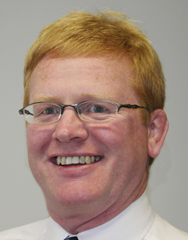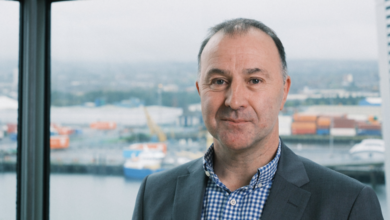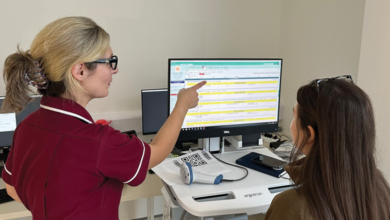Future of health ICT
 Mobile computing and comprehensive electronic care records are the next steps for ICT in health. Peter Cheney talks to Stephen Stewart, from the South Eastern Trust, about the way ahead.
Mobile computing and comprehensive electronic care records are the next steps for ICT in health. Peter Cheney talks to Stephen Stewart, from the South Eastern Trust, about the way ahead.
In Stephen Stewart’s view, ICT in health is the means to the end rather than the end in itself. “I think IT in the Health Service is about enabling people to help people. It’s a real enabler and becoming more and more of an enabler.”
Stewart is Assistant Director of Technology and Telecommunications for the South Eastern Health and Social Care Trust, and is based at the Ulster Hospital in Dundonald. The trust employs around 9,000 staff and serves around 345,000 people in the North Down, Ards, Down and Lisburn districts.
His priorities are two-fold: to maintain existing services for the trust’s 6,000 ICT users (a third on the Ulster site) and “making sure they get best use out of the current infrastructure and the technologies that they’ve got access to.”
On the second point, he manages a £2 million capital programme which involves implementing new systems and changing existing ones.
“This Ulster Hospital site’s being redeveloped so one of my priorities is to service that capital development to make sure that we can plan the IT infrastructure and the systems that are going to be used in the new hospital and any other capital developments around the trust,” he says.
Stewart notes that there is increasingly a “greater dependence on ICT to help deliver services and enable services to be delivered.”
The Northern Ireland Picture Archiving and Communications System (NIPACS) is a prime example. Launched in November 2009, it stores radiology images generated in hospitals across Northern Ireland as digital files on a large central archive. These can then be accessed by authorised staff, who can view all of the patient’s scans and reports on desktop computers.
“There’s probably not one group of staff who are delivering health or social services that doesn’t use some element of IT,” he continues, “so we interact with everybody, and everybody at some point will depend on some of the services we deliver.”
“If the services weren’t there, then people would start to notice. It’s becoming more and more critical that IT services are there whenever people need to have access to them,” comments Stewart.
Patients and clients can view more information about conditions and treatments on the internet. As a result, they are better able to challenge doctors, nurses and other health professionals.
The proposed electronic care record (to be implemented in 2012) will combine information about a patient or client’s care. For example, if a person is admitted to A&E, staff could log in and check all previous treatments, their GP’s notes, X-rays and any contact with social services.
“That composite view is becoming more and more important,” he explains, adding that the Health Service’s aim is to “try to create an environment where there’s a single view of your treatment, my treatment, everybody’s treatment available for those people who are delivering care.”
Electronic care records, he expects, will eventually be available on mobile devices as well as desktops, a development that reflects how society uses technology.
A district nurse would, for example, be able to check a patient’s details when she is out and about. Other community staff such as social workers and health visitors could also benefit.
“Everybody uses iPhones; they’re becoming more and more prevalent in personal life,” Stewart comments. “Everybody’s using iPads. People are comfortable with mobile computing and I think there’s going to be a pressure on us to deliver the systems that we have in that type of environment”.





